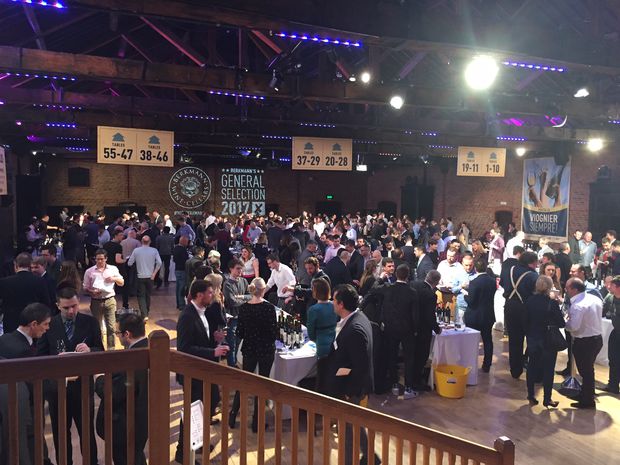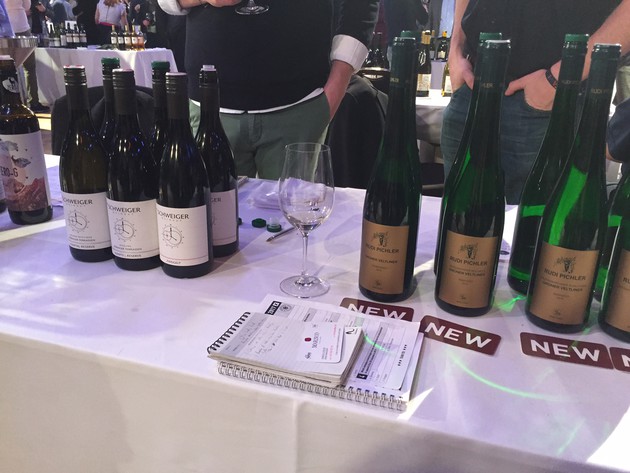
Fashion police at work at Berkmann's
No one wants the title of 'most unfashionable' wine region.
But the unfortunate epithet dogged a few tables at Berkmann's Wine Tasting at The Brewery in Moorgate yesterday.
The question, "which out of fashion wine region would you most like to see make a comeback in 2017", appeared on Berkmann's Palate for the Ballot - a tongue in cheek attempt to engage visitors in a new way and get the trade to vote on their favourite and least favourite grapes varieties, styles and regions.
On the ballot sheets, Beaujolais, Germany, Sherry and premium Languedoc were singled out for falling out of favour with UK consumers in recent years.
But mostly, those representing the wines responded with smiles, and were philosophical with their responses.
As Adrien Duboeuf-Lacombe, export director of Georges Duboeuf said on the Beaujolais table, the region's unfashionable reputation has now come full circle, so much so, that was once highly unfashionable with the previous generation, is by default now finding itself on the cusp of becoming highly in fashion with the current one.
"Gamay was popular 30 years ago, but then for a long time, sons didn't want to drink what their fathers were drinking," he said.
"But now you have the grandchildren who want to drink something different to their fathers, so they're coming back to Gamay."
They are drawn to Gamay, he said, because it's "light and full of fruit" and also because it fits into the Bistro style - a French dining style comparable to the boom in casual dining in the UK.
"Although we only make Gamay in Beaujolais, each plot has its own terroir. The younger generation is really interested in this, and they are also interested in wines which are produced rather than made. Our wines are very natural, with nothing added. The younger generation really responds to this," he added.

|
 Rudi Pichler Austria
Rudi Pichler Austria
Over at the Germany table, lamenting the gap between what the trade thinks of Germany and what consumers do, is a well-trodden path.
With Austria, getting the message across is even more difficult, especially when components of the somewhat obscure Wachau classification system - Steinfeder, Federspiel, and Smaragd - take centre stage on front labels.
"People from the trade don't even know how the Austrian system works," said Chris Lively, brand ambassador for Austrian wines.
"If you look at the success of Australia or New Zealand, they've kept it really simple with their messaging. In the Rudi Pichler range, the wines range from £13 up to £30 for a grand crus equivalent. In the on-trade, the mark-up for the top wines is three times the price, which is a difficult sell. At the moment it's really relying on the sommelier to make a recommendation. Once customers try it, they love it."
Emerging regions with the potential to have most appeal to the UK market also joined the conversation at Berkmann, with Slovenia, Brazil, Hungary and Portugal all appearing on the ballot sheet.
Slovenian producer Quercus presented their Pinot Bianco yesterday, which - along with Gruner Veltliner and Vermentino - was put forward as possible alternative to the indomitable Sauvignon Blanc.
"Pinot Bianco could be a shining star this year," said Quercus' Damir Kapitanovic. "It has fruitiness, freshness and full body similar to Chardonnay" - but without chardonnay's divisiveness, he added.
"Our Pinot Bianco is currently in 300 Young's pubs in the UK and the feedback we've had is that customers are looking for something different other than Pinot Grigio, Chardonnay or Sauvignon Blanc."
Keywords:
- wine
- News
- Producers
- France
- European Wine News
- Eastern Europe
- Sectors
- Germany
- Jo Gilbert
- HWS - Jo Gilbert






